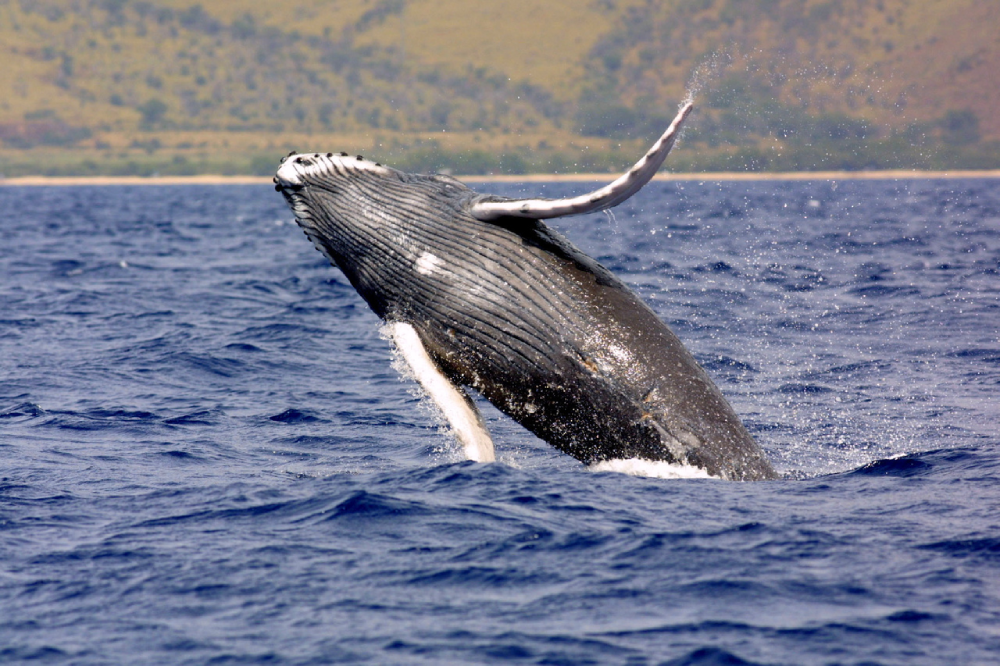In the vast expanse of our planet’s oceans, few creatures command attention quite like the humpback whale. With their graceful movements, haunting songs, and colossal presence, these magnificent beings have captivated the hearts and minds of humans for centuries. In this article, we embark on a journey to explore the enigmatic majesty of the humpback whale, delving into its biology, behavior, and significance in both marine ecosystems and human culture.
Humpback Whale Biology and Physical Characteristics
The humpback whale, scientifically known as Megaptera novaeangliae, is one of the largest animals on Earth, belonging to the family Balaenopteridae, which also includes other baleen whales like the blue whale and the fin whale. They are distinguishable by their long pectoral fins, which can reach up to one-third of their body length, and the distinctive hump on their backs, which gives them their name.
Adult humpback whales typically range in length from 12 to 16 meters (40 to 52 feet) and can weigh as much as 30 metric tons. Their bodies are streamlined and tapered, allowing them to navigate effortlessly through the water despite their massive size. One of the most striking features of humpback whales is their complex pattern of black and white markings on their underside, which is unique to each individual and serves as a form of identification for researchers.
Behavior and Migration
Humpback whales are popular for their acrobatic displays, which include breaching, tail slapping, and spy hopping (raising their heads vertically out of the water). These behaviors are believed to serve various purposes, from communication and social bonding to play and courtship.
One of the most remarkable aspects of humpback whale behavior is their annual migration, which is among the longest of any mammal. Each year, they travel thousands of kilometers between their feeding grounds in polar regions and their breeding grounds in warmer waters near the equator. This epic journey is essential for their survival, as it allows them to access the rich food resources of the high latitudes during the summer months and to mate and give birth in the protected waters of the tropics during the winter.

Communication and Songs
Perhaps the most famous aspect of humpback whale behavior is their haunting songs, which are among the most complex and beautiful vocalizations in the animal kingdom. These songs consist of sequences of moans, cries, and chirps that can last for up to 20 minutes.
The purpose of humpback whale songs remains a subject of much debate among scientists. While some believe that they may serve as a form of communication between individuals or as a means of attracting mates, others suggest that they could play a role in navigation or even be a form of artistic expression. Regardless of their function, humpback whale songs are a testament to the intelligence and complexity of these remarkable creatures.
Ecological Significance
Humpback whales play a crucial role in marine ecosystems as both predators and prey. As filter feeders, they primarily consume small schooling fish like herring and krill, which they engulf in massive mouthfuls of water and then filter through their baleen plates. In doing so, they help to regulate the populations of their prey species and maintain the balance of the marine food web.
Furthermore, humpback whales are popular as ecosystem engineers, as their feeding behaviors can have far-reaching effects on the environment. By redistributing nutrients through their feces and creating turbulence in the water with their movements, they stimulate the growth of plankton and other microscopic organisms, which form the basis of the marine food chain.
Conservation Status and Threats
Despite their awe-inspiring presence, humpback whales face numerous threats in the modern world, including habitat destruction, pollution, climate change, and entanglement in fishing gear. Historically, they were also in target of commercial whalers for their valuable blubber and baleen, which decimated their populations and pushed them to the brink of extinction.
Fortunately, conservation efforts over the past several decades have led to the recovery of many humpback whale populations, and they are now listed as a species of least concern on the IUCN Red List. However, they still face ongoing challenges, particularly in regions where they come into conflict with human activities such as shipping, fishing, and offshore development.
Humpback Whale Conclusion
In conclusion, the humpback whale stands as a symbol of the beauty, diversity, and fragility of our planet’s oceans. From their majestic physical appearance to their intricate behaviors and vocalizations, these magnificent creatures inspire awe and wonder in all who encounter them. As we continue to explore and understand the mysteries of the deep, let us strive to protect and preserve the humpback whale and all of its marine brethren for generations to come.









